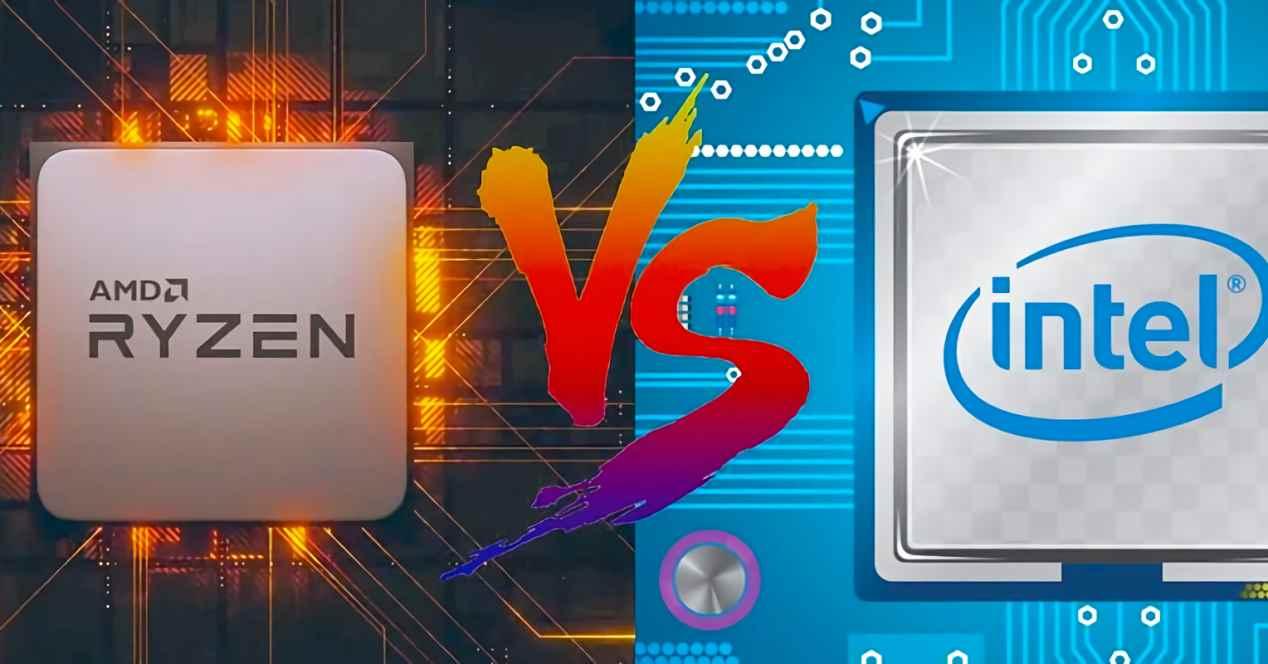If we look at the lists of best-selling processors, we will see that AMD easily dominates the market with its Ryzen 5000s which were launched in 2000. Of course, CPUs are one thing as an independent product to assemble a PC and c is another. it’s entire teams that are what people buy, the clearest case being laptops. As if that weren’t enough, Lisa Su’s company has inherited a brand-related tradition that is counterproductive for its future and especially for breaking people’s mental quota. This is why we are going to explain why AMD sells less than Intel and where they went wrong from our point of view.
Why does AMD sell less than Intel?
A private label is a way of selling a product for less and with lower quality levels, but which fits much tighter pockets. Well, for many years AMD was seen as the cheap CPU brand for consumers who didn’t have the capital to buy an Intel. Which would be great if it weren’t for the fact that not only is it more expensive to manufacture chips, but also to develop them.


This means that prices must be higher and higher for new processors and therefore cannot be kept constant if AMD is not to go bankrupt. The problem of brand perception? Well, if Intel launches new processors and motherboards at a high price, everyone assumes that’s normal, because it’s the leading brand and those prices are accepted. On the other hand, if AMD does this, it does not end up stealing market share from Intel, but rather loses its own due to the perception of the brand in general, which is nothing but a cheap alternative to Intel .
What would have been the ideal approach?
It will surprise you, but you have to start from the fact that in terms of CPUs, these processors, being made up of several chips, have the cores and the caches in one, on the one hand, then the integrated memory controller and the PCI interfaces Express.in another which is the IOD. All interconnected through a proprietary interface called Infinity Fabric. Well, for AMD it would have been very easy to change the IOD of the Ryzen 7000 for that of the Ryzen 5000, but keeping the CCD of the Ryzen 7000.
So that? Well, to create Ryzen 7000 AM4s, which would not have support for DDR5 mem ory, nor PCI Express 5.0 and also could not reach the TDP of the unlocked versions. However, despite its lower performance than the AM5 versions, it would have allowed users with an existing motherboard to buy a Ryzen 7000 processor, so we would end up with two ranges: each for a different chipset.
People don’t usually change CPUs from generation to generation, but it would have boosted sales for those who had a Ryzen 4000 or less and want a more powerful system or started with a card-based PC mother AM4 with an inexpensive processor. and they want to graduate with a simple change of processor.
This is why AMD sells less than Intel in laptops
The reality is that Lisa Su designs her processors for desktop computers and then moves them to laptops. Instead, Intel, with more resources to work with due to its higher market share and profits, may have two different teams working on the same architecture.
So in terms of performance per watt, in desktop power consumption, AMD stands out from Intel, but if we move on to the laptop world, that’s where the differences disappear. As if that weren’t enough, AMD has decided to negate its competitive advantage over its rival, which is its experience in assembling integrated graphics chips for consoles.
Honestly putting 16 cores in a laptop processor is a big step, although the reality is that the vast majority of these devices are sold for gaming and not many games take advantage of this configuration so better graphics integrated would be preferable in order. to move games with more ease and not depend on a dedicated game in the system. Well, AMD could take advantage of that and it’s a mistake that it doesn’t.
What would be the ideal processor for AMD gaming laptops?
In a laptop, the user does not choose his graphics card, since he cannot change it. At the same time, we have seen how AMD is able to create custom processors using its excellent performance technology for dedicated systems. In other words, video game consoles. Why isn’t this done on laptops? The answer is simple, DDR4 and LPDDR4 memory bandwidth is a bottleneck, if GDDR6 was used the problem would be CPU latency.
However, there is a type of memory that is ideal for gaming laptops because it has much lower latency than DDR and LPDDR, bandwidth equivalent to GDDR6, and takes up little space in a laptop. It has already been tested in its time for the graphics cards of AMD laptops for Intel Macs, it is obviously the HBM2E memory. The only problem? The processor and memory have to be assembled in one piece, but that wouldn’t be a problem in a laptop.
Imagine for a moment a processor with the integrated graphics card of an Xbox Series S, which can run any game in Full HD without problem and accompanied by 16 GB or 32 GB of memory integrated into the processor. The limit ? We couldn’t expand the RAM, but it would be way better than all those laptops with a GTX 16 or an RTX 3050. For that, we would only need an HBM2E memory stack. Let’s not forget that most games are designed to run with 8 cores and 16 threads, no more.
Table of Contents











